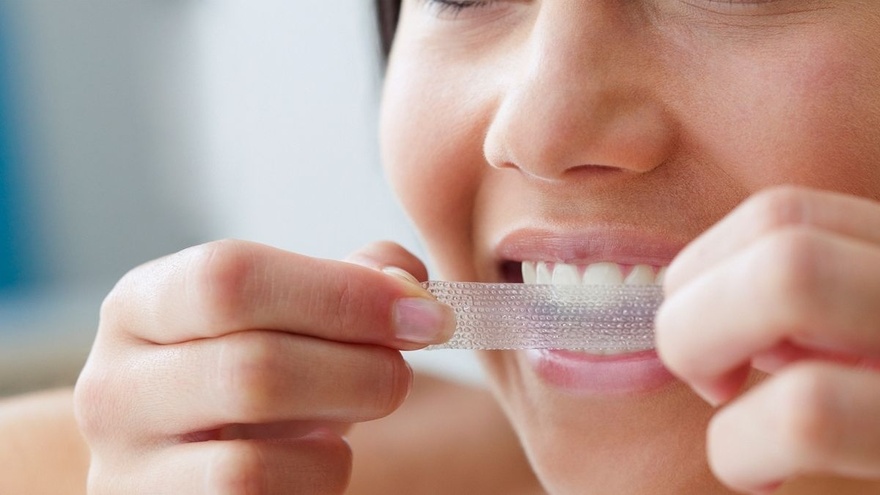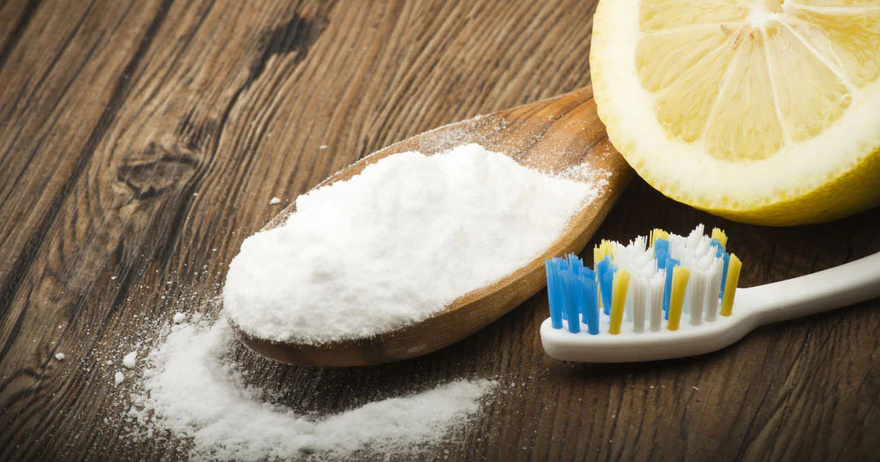A bright, confident smile is often one of the first things people notice, and maintaining the health and appearance of your teeth can significantly boost your self-esteem. While there are numerous commercial products available for teeth whitening, many of them contain chemicals that might be a concern for some individuals. Fortunately, you don’t need to rely on these products to achieve a dazzling smile. There are several natural methods to whiten your teeth right from the comfort of your home. Here’s a guide to some effective, safe, and natural teeth-whitening techniques you can try.

1. Oil Pulling
Oil pulling is a traditional oral health practice with origins in Ayurvedic medicine. It involves swishing oil around your mouth to remove bacteria and reduce plaque, which can contribute to tooth discoloration. Coconut oil is commonly used for this purpose due to its pleasant taste and its high lauric acid content, which has antimicrobial properties.
How to Do It:
- Choose Your Oil: Coconut oil is a popular choice, but you can also use sesame oil or sunflower oil.
- Swish Oil: Take about one tablespoon (15 ml) of oil and place it in your mouth. Swish the oil around your mouth, ensuring it reaches between your teeth.
- Duration: Continue swishing for 15-20 minutes. The oil will become thinner as it mixes with saliva.
- Spit and Rinse: After 15-20 minutes, spit the oil out into a trash can (not the sink, as it can cause clogging). Rinse your mouth thoroughly with water.
- Brush Your Teeth: Finish by brushing your teeth as usual.
This practice can help reduce plaque and bacteria, leading to brighter teeth over time.
2. Brushing with Baking Soda
Baking soda is a common household ingredient known for its mild abrasive properties. It can help remove surface stains and whiten teeth naturally. Many commercial toothpaste brands include baking soda for this very reason.
How to Do It:
- Mix the Paste: Combine 1 teaspoon (6 grams) of baking soda with 2 teaspoons (10 ml) of water to form a thick paste.
- Apply: Use a toothbrush to apply the paste to your teeth, brushing gently.
- Brush: Brush your teeth with the baking soda paste for about 2 minutes.
- Rinse: Rinse your mouth thoroughly with water.
- Frequency: Use this method a few times a week. Overuse can lead to enamel erosion due to the abrasive nature of baking soda.
Baking soda helps scrub away surface stains and can gradually make your teeth look whiter.

3. Eat Fruits and Vegetables
A diet rich in fruits and vegetables not only supports overall health but also helps keep your teeth white. While they don’t replace brushing and flossing, the physical act of chewing raw fruits and vegetables can help remove plaque and prevent stains.
Fruits and Vegetables That Help:
- Strawberries: These contain malic acid, which can help remove surface stains.
- Pineapple: Pineapple contains bromelain, an enzyme that can help break down stains on teeth.
- Apples and Carrots: Crunchy fruits and vegetables stimulate saliva production, which helps wash away food particles and bacteria.
Incorporate these foods into your diet to aid in maintaining a brighter smile.
4. Brush and Floss Regularly
Regular brushing and flossing are crucial for maintaining white teeth and overall oral health. Plaque buildup is a common cause of tooth discoloration, and consistent oral hygiene practices can help prevent this.
Brushing Tips:
- Brush Twice a Day: Use a fluoride toothpaste to clean your teeth thoroughly.
- Technique: Brush for at least two minutes each time, ensuring you reach all surfaces of your teeth.
- Replace Your Toothbrush: Change your toothbrush every 3-4 months, or sooner if the bristles are frayed.
Flossing Tips:
- Daily Flossing: Floss once a day to remove plaque and food particles from between your teeth.
- Technique: Gently slide the floss between your teeth, curving it around each tooth and moving it up and down to remove debris.
Maintaining a consistent brushing and flossing routine can help keep your teeth white and healthy.
5. Prevent Tooth Stains
Preventing stains from developing is as important as removing them. Certain foods and drinks are known to cause staining, but you can minimize their impact on your teeth with a few simple strategies.
Tips to Prevent Stains:
- Limit Staining Foods and Drinks: Reduce your intake of coffee, red wine, cola, and dark berries. If you do consume these, do so in moderation.
- Use a Straw: Drink staining beverages through a straw to minimize contact with your teeth.
- Rinse After Eating or Drinking: Rinse your mouth with water after consuming staining foods or beverages.
- Brush After Meals: Ideally, brush your teeth about 60 minutes after consuming staining substances to limit their effects.
By being mindful of your diet and oral care habits, you can prevent new stains from forming and keep your smile looking bright.
6. Add Calcium to Your Diet
Calcium is essential for strong teeth and bones. It helps protect your enamel, the hard outer layer of your teeth. Enamel erosion can lead to the exposure of the underlying dentin, which is naturally yellow and can make your teeth appear discolored.
Calcium-Rich Foods:
- Milk: A well-known source of calcium that supports enamel strength.
- Cheese: Contains calcium and other nutrients that benefit your teeth.
- Broccoli: A vegetable high in calcium that also helps maintain strong enamel.
Incorporating these calcium-rich foods into your diet can help protect your teeth from erosion and maintain their whiteness.

Conclusion
Achieving a bright, white smile doesn’t require harsh chemicals or expensive treatments. By incorporating these natural methods into your routine, you can maintain and enhance the whiteness of your teeth while ensuring overall oral health. Whether it’s through oil pulling, using baking soda, eating teeth-friendly fruits and vegetables, or maintaining good oral hygiene, these tips offer effective and safe ways to achieve a pearly white smile naturally.
Remember, consistency is key. Regular use of these methods, combined with good oral hygiene practices and a balanced diet, will help you maintain a beautiful, confident smile. Embrace these natural whitening techniques and enjoy the benefits of a brighter, healthier smile without the use of harsh chemicals.






























